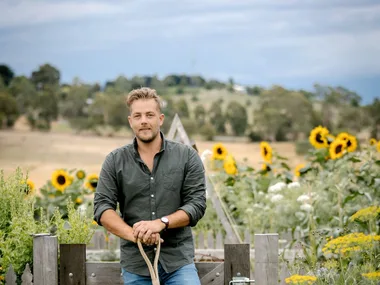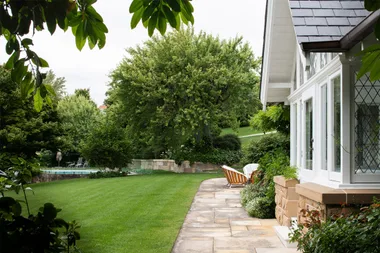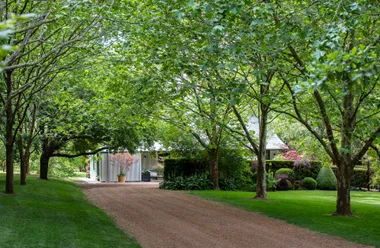Four years ago, Gera de Wet and her husband Johann moved to De Wetshof, a celebrated wine estate nestled in Robertson, South Africa, which has been in Johann’s family since 1954. The house needed renovating and the garden had grown so wild you couldn’t see the surrounding vineyards from the front terrace.
“I’m a graphic designer who has branched into interior design, but gardening was something I had little experience in. Despite this, I flung myself into it,” she recalls with a laugh. “To me, a garden is an extension of the home and therefore, just as important. I realised that the sooner I started, the more time it would have to establish and evolve.”
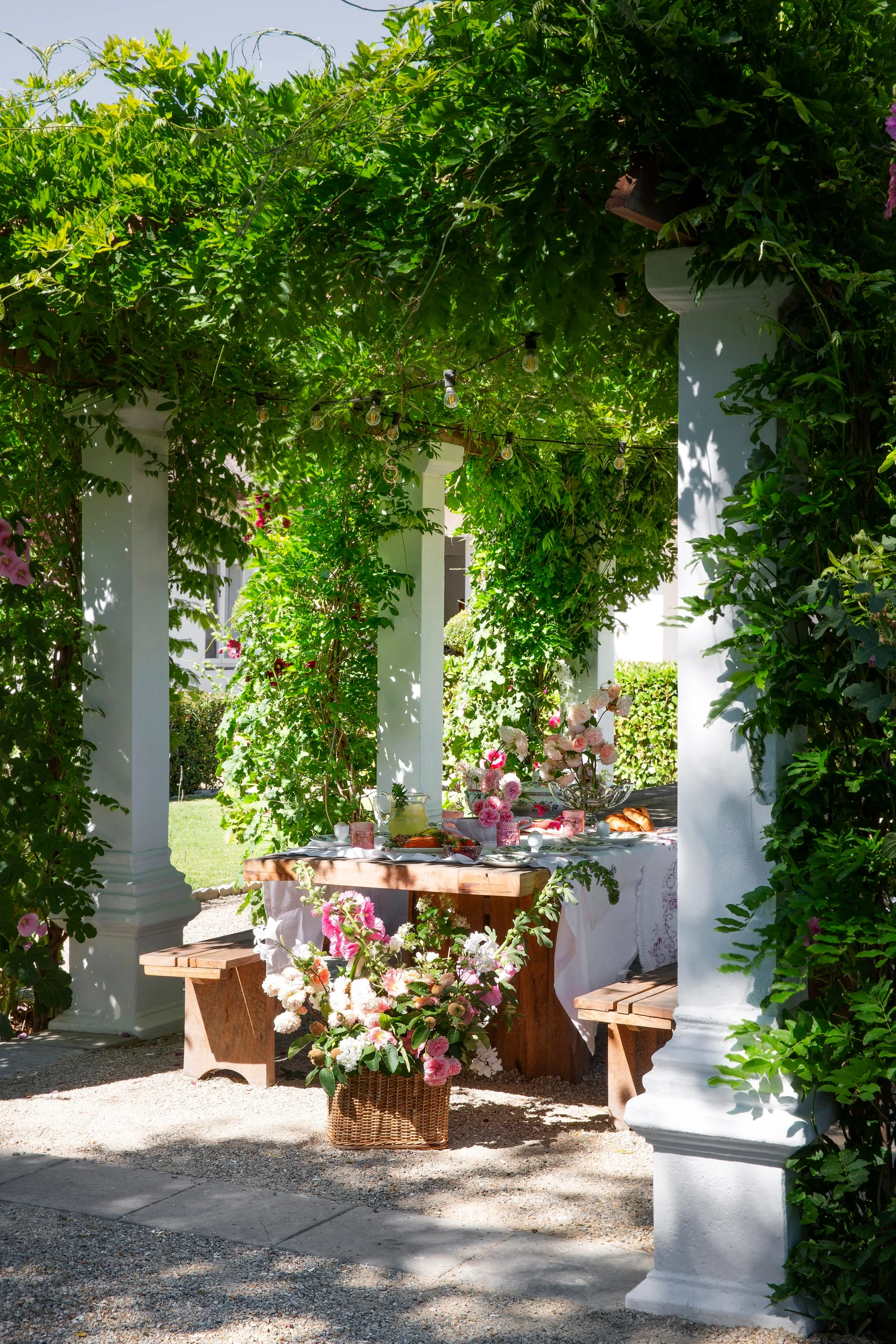
The task of redesigning the sprawling grounds seemed daunting, so Gera broke down the process into achievable goals. Step one involved removing and donating plants that were dead, overgrown or unwanted. Then a basic layout of the garden was designed, dividing sections into ‘rooms’ planned around the existing trees. “I envisioned a striking entrance leading to a series of formal and informal spaces,” says Gera, who approached the design as she would have a house interior.
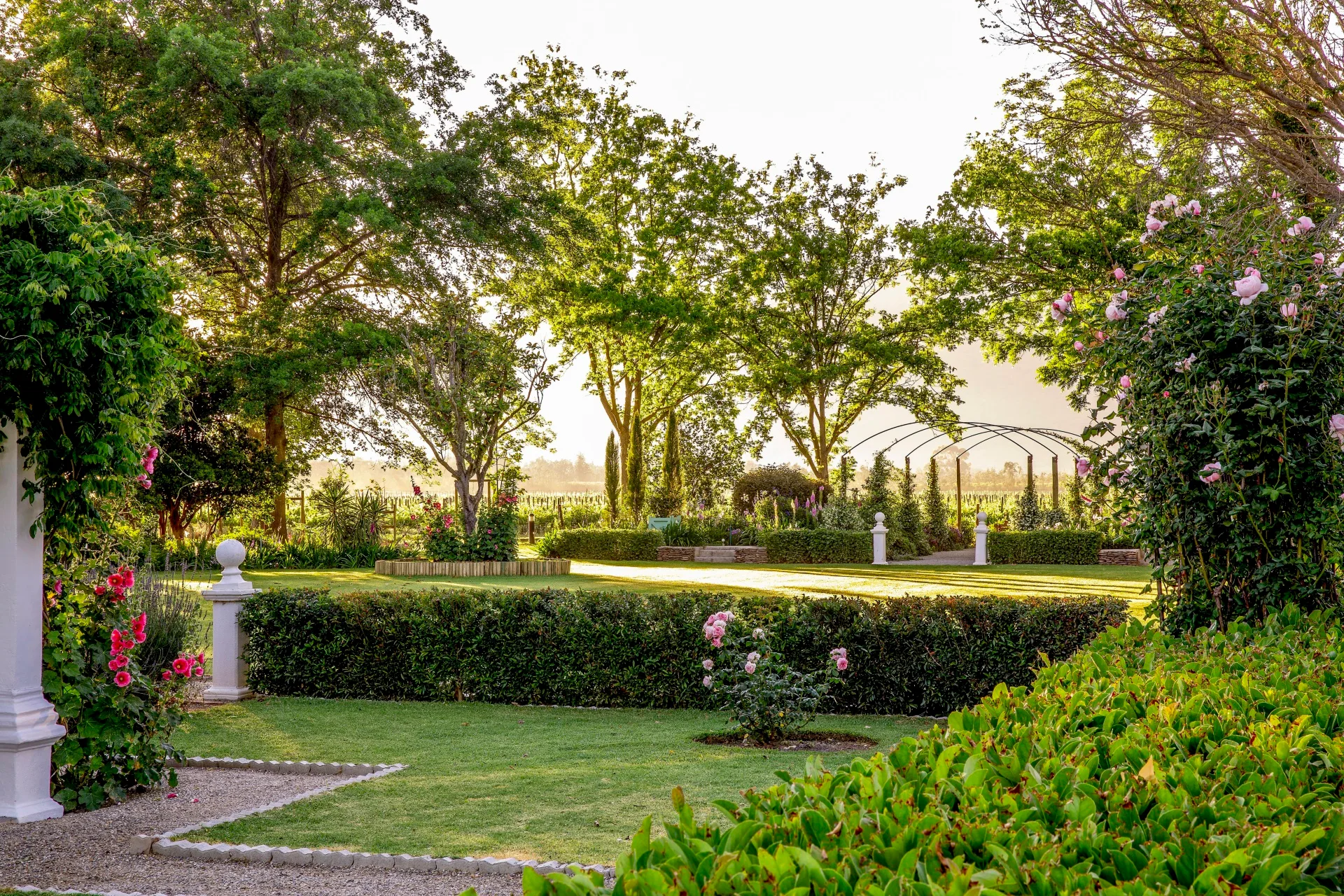
European garden inspiration
In the front garden is the so-called ‘Acropolis’, a formal arrangement of grassed areas and gravel paths bordered on three sides by hedges of viburnum and eugenia. At the centre stands a wisteria-covered pergola, its tall columns anchored by towering hollyhocks.
“These flowers are such a source of pride. I remember being captivated by them when I travelled in Europe and I made up my mind to one day make them fashionable in my own garden,” she says. “The fun part was selecting plants for the beds. I did a lot of research to ensure suitability to the climate and I gave careful consideration to the overall impression in terms of shape, height and colour.”

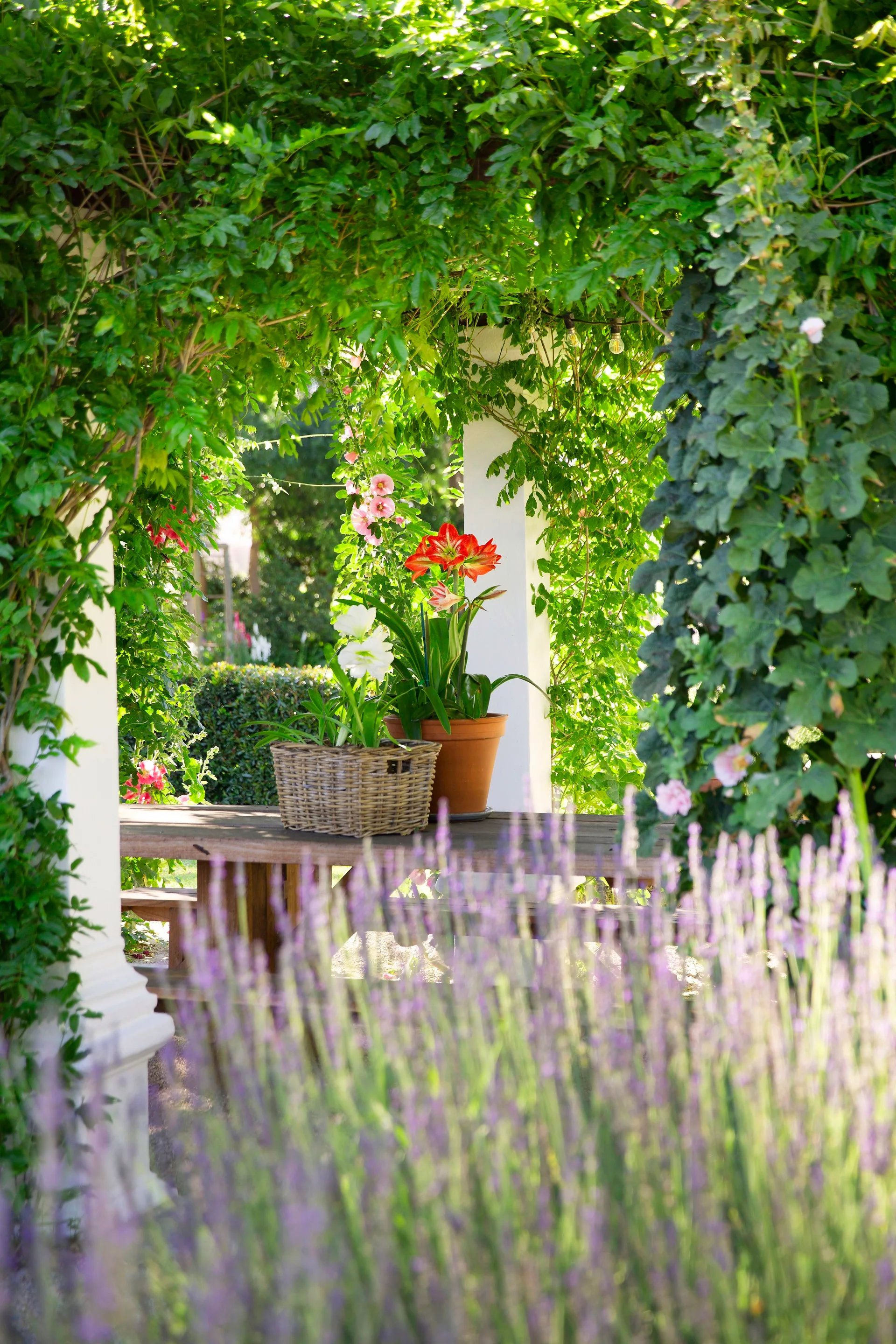
For pest control without the chemicals, Gera prefers companion planting – the practice of growing different plants in close proximity to enhance each other’s growth and ward off blight. Here, beds of lavender neighbour Gera’s roses and act as host plants to protect them from aphids. Both love basking in full sun and enjoy frequent visits from the pollinators they attract.
Sustainable spotlight
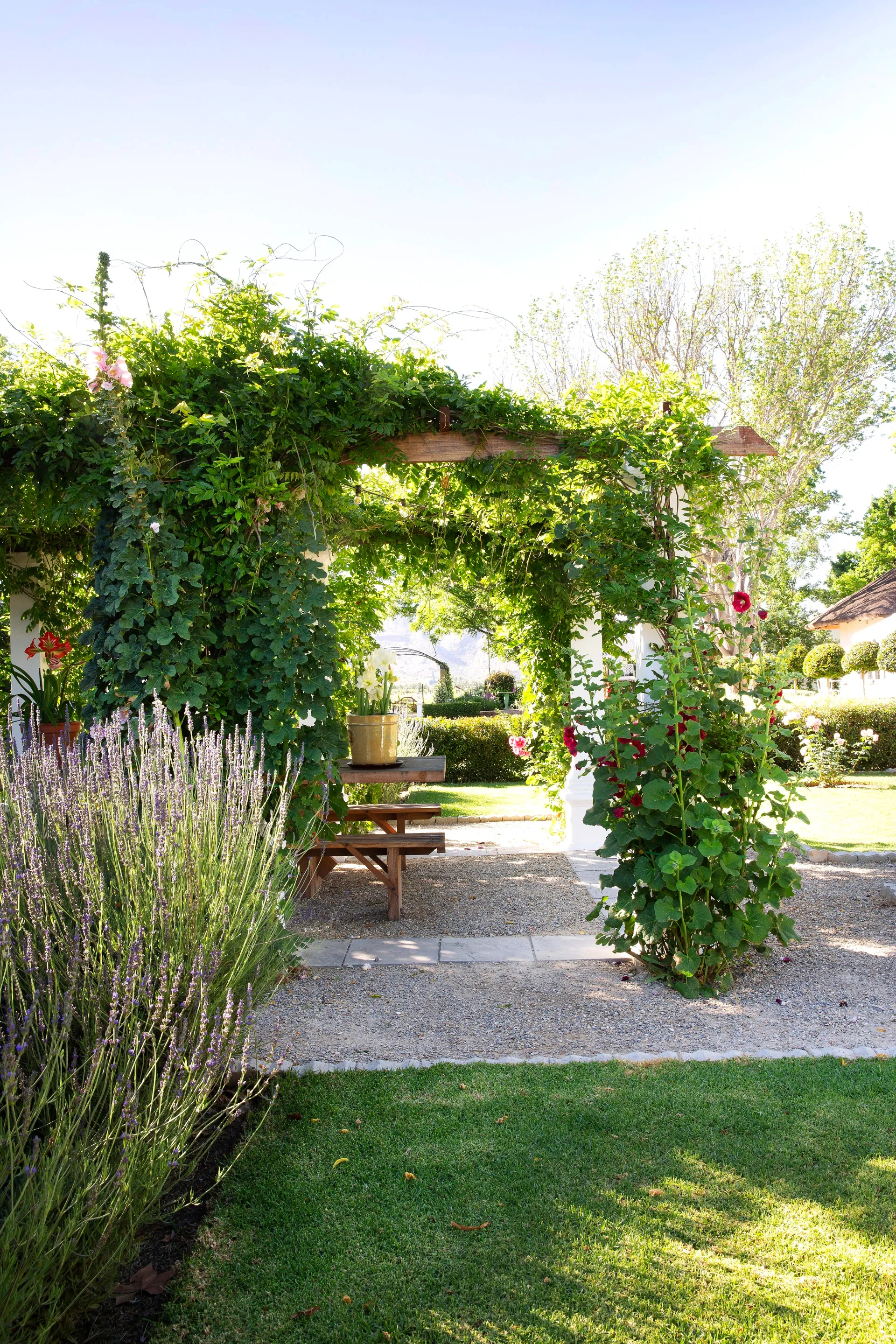
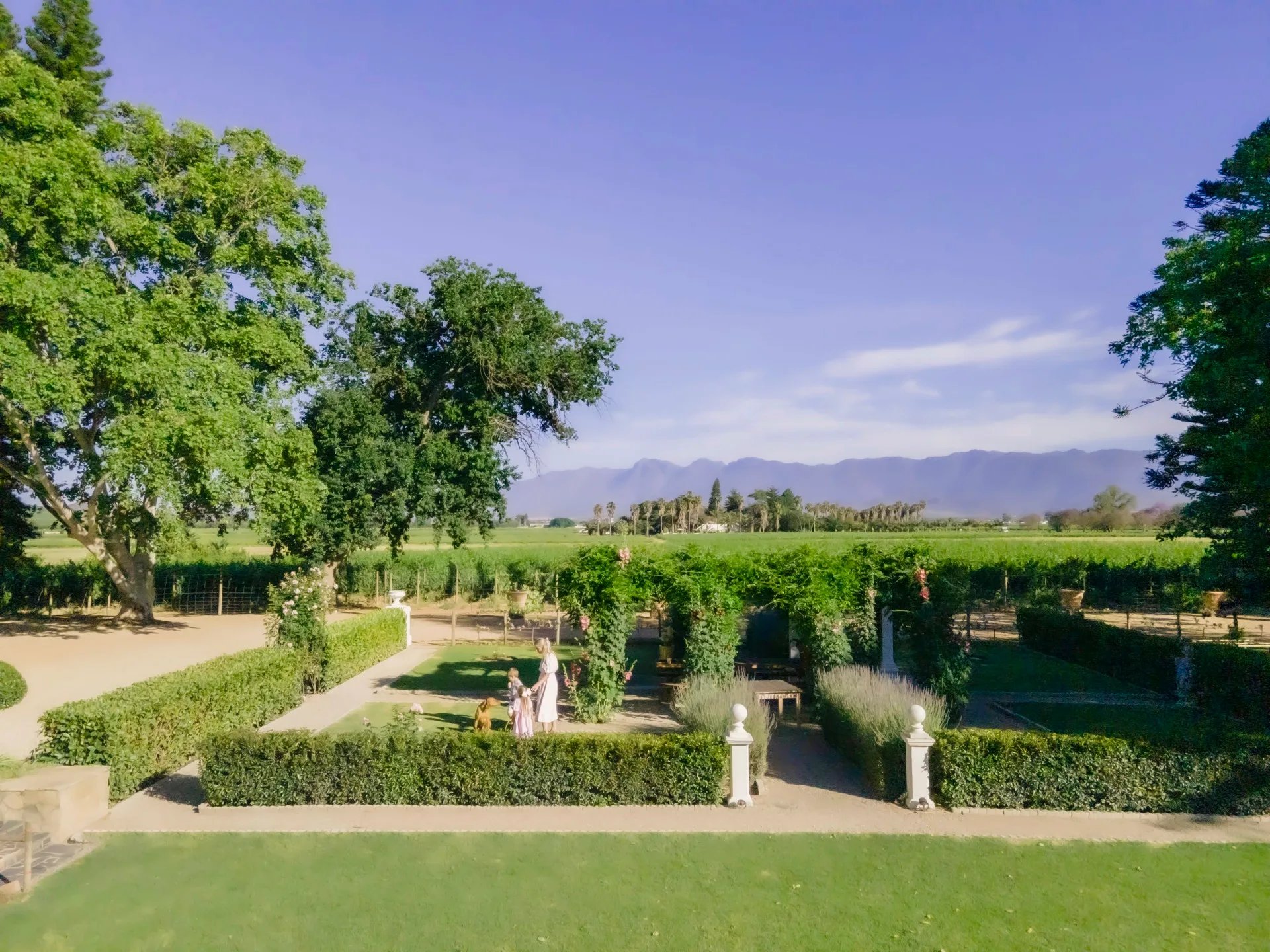
Butterfly garden
An expanse of lawn spans the middle section of the garden between ‘The Acropolis’ and Gera’s butterfly garden, named because it helps attract pollinators. “My farm team was indispensable in helping me use as much of the existing garden as possible. We transplanted agapanthus that are almost 65 years old and ribbon bush, which was shaped into hedges to give the space some structure.” This ‘room’ illustrates Gera’s admiration of Italian and English country gardens.
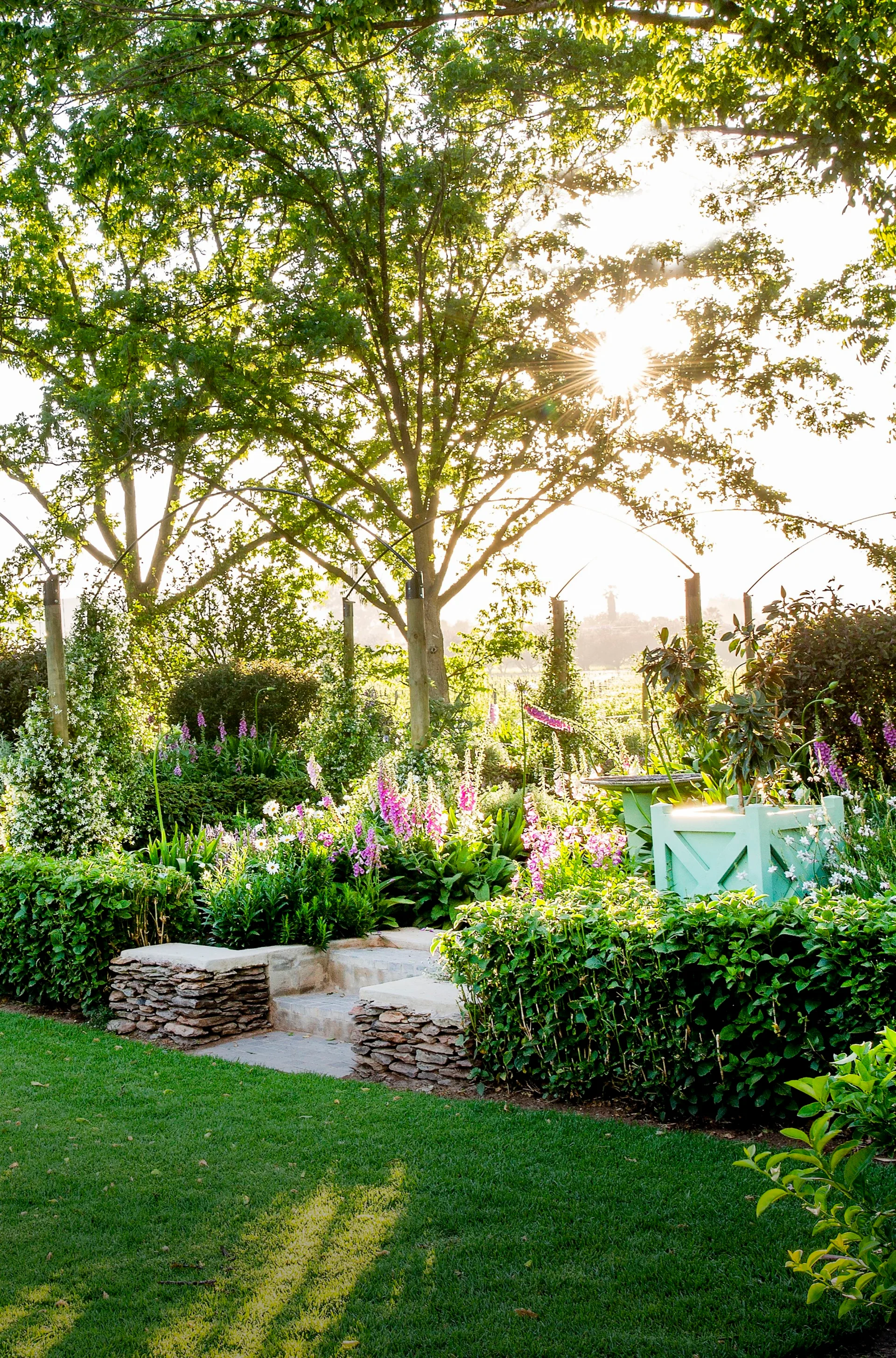
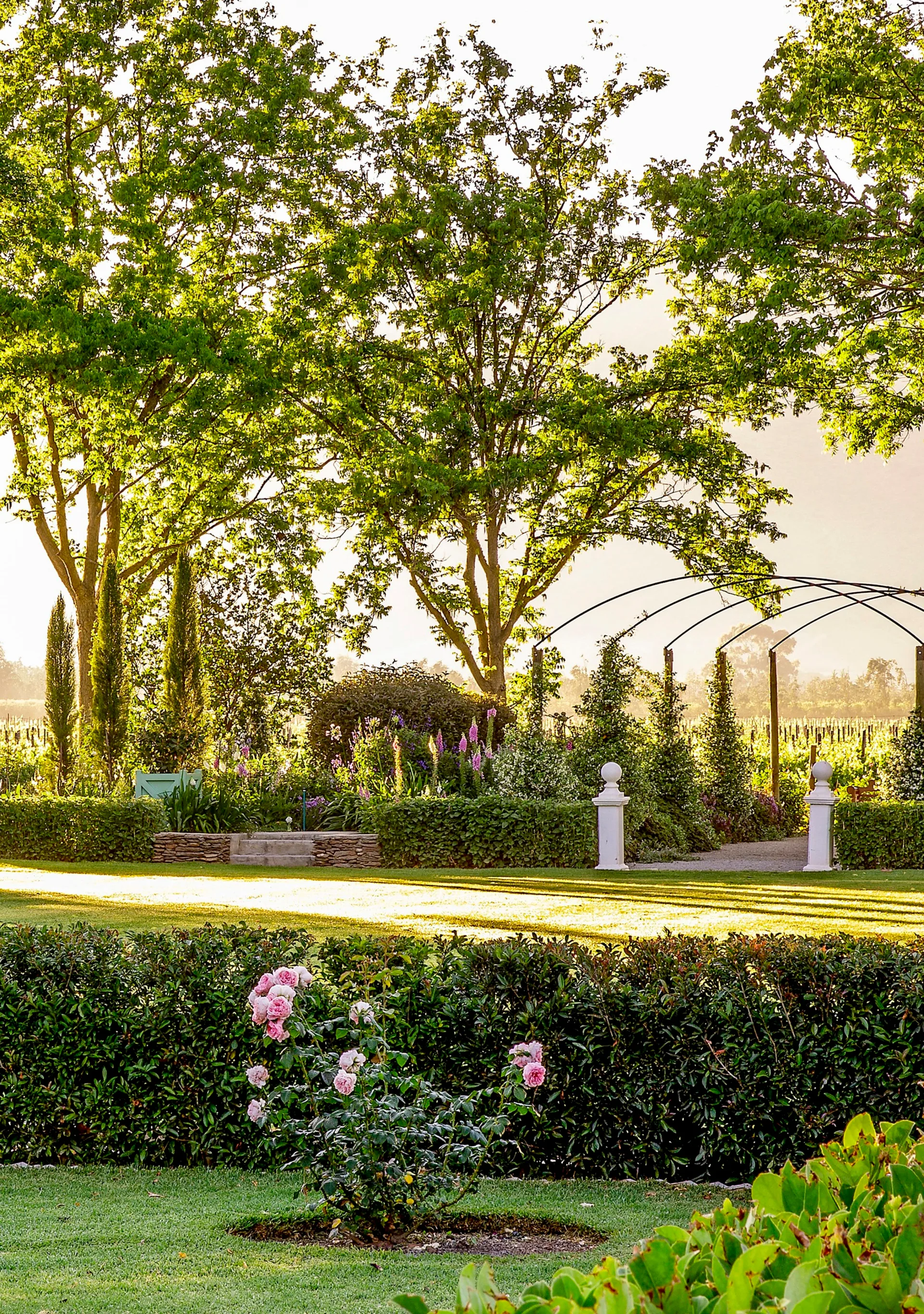
The driveway features a row of orange trees planted in terracotta pots inspired by Gera’s visits to limonaie (citrus greenhouses) in Italy. “I chose oranges over lemons because I wanted to create a palette to complement the extraordinary sunsets we experience here in autumn,” she says. On the opposite side, running a length of 28 metres, an espalier of crab apple trees has been established, where Cape snowdrops provide a reliable winter spectacle below.

Gera’s most recent addition is a shade garden verging the vineyards, where fuchsias, hellebores and gardenias are the focus along with a variety of seasonal annuals. In late spring, a bank of relocated watsonias puts on a show under a soaring Norfolk pine. “I derive almost childlike joy from witnessing my garden evolve. It takes hard work and patience, but nothing could be more satisfying… except for gathering flowers with my children,” says Gera with a smile, adding a few more roses to the arrangement for the brunch table.
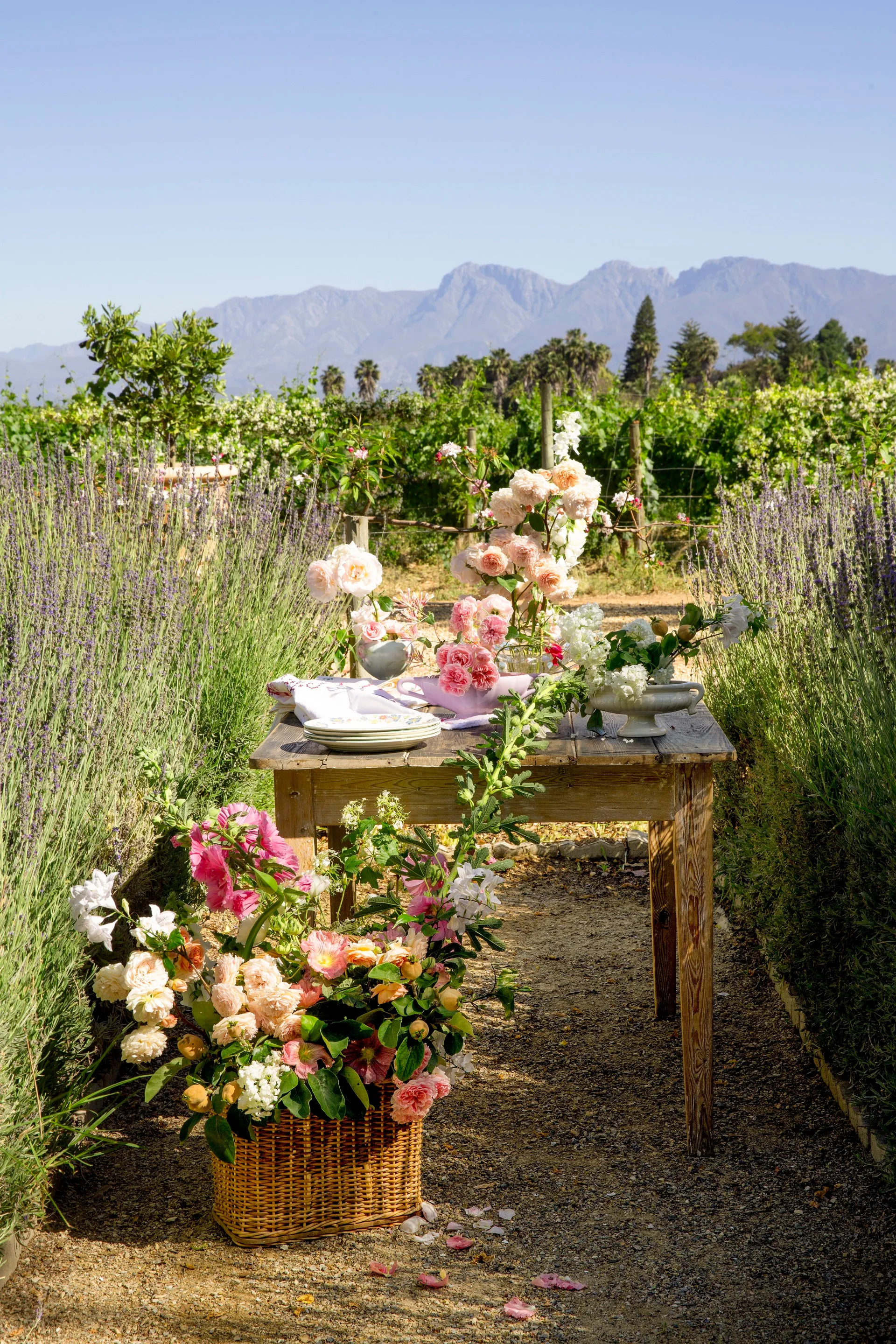
 Photography: Karl Rogers
Photography: Karl Rogers
